Moon Monday #189: The next lunar missions by Intuitive Machines for NASA CLPS, and more things that orbit Luna
First lander to drill on the Moon’s south pole delayed for good
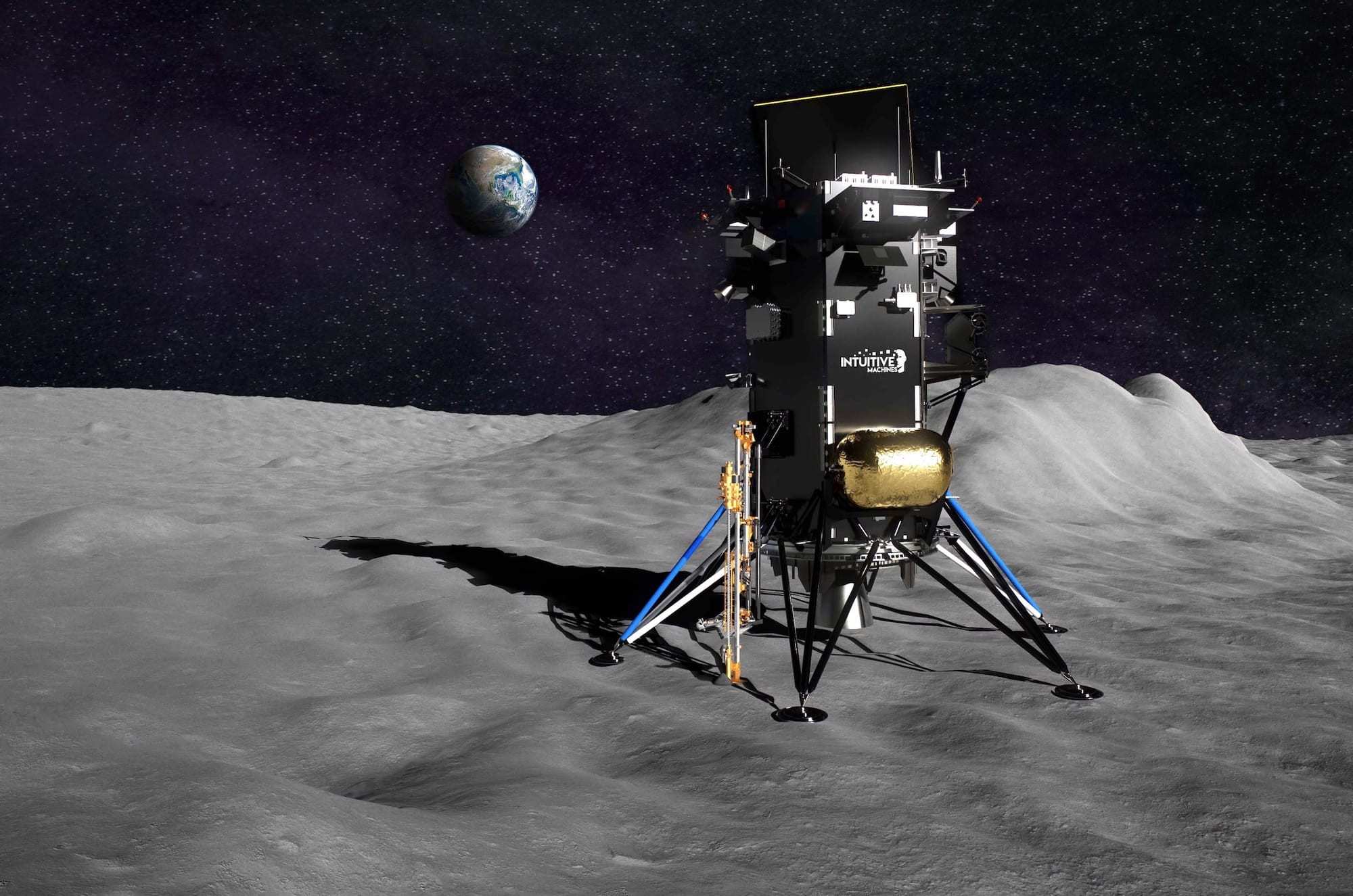
Jeff Foust reports that NASA will provide an additional $12.4 million to Intuitive Machines for its upcoming second Moon landing mission (IM-2) part of the agency’s CLPS program for work related to changing the landing site of the Nova-C spacecraft to 89°S. This means IM-2’s CLPS task order amount has now increased from the original $47 million to about $62.4 million. [The recent investigation on CLPS by NASA’s Office of Inspector General noted a prior $3 million increase over the original sum]. The landing site change has in part delayed the mission’s launch target to no earlier than December 2024.
Neither Intuitive Machines nor NASA have specified the new site’s coordinates but it’s interesting in any case because the landing site was moved from 85°S to meet the mission’s primary goal of encountering water ice. At 89°S, scientists expect better chances of water ice being present within a meter of the surface—the maximum extent of the Honeybee-Robotics-provided TRIDENT drill aboard the lander. Another payload on Nova-C, the MSolo mass spectrometer, will analyze the material excavated by the drill to identify water ice and other such volatiles, a first such study.
Last month, Intuitive Machines completed hot-firing its in-house developed VR900 methalox engine for the mission, which will improve lander performance over their first CLPS landing IM-1. Jeff Foust has previously reported that Intuitive Machines is refining several systems on Nova-C with the hope of bagging full success this time around instead of the partial one with IM-1—which NASA and Intuitive disappointingly skewed the success criteria of and continues to at various space events when talking about the mission.

The IM-2 mission has more enticing exploration to offer. The Nova-C lander will deploy Lunar Outpost’s MAPP rover on the lunar surface, which sports a near-field depth camera to reconstruct the surface for future astronaut training in virtual reality. The rover itself will deploy a miniature robot called AstroAnt, which will take temperature measurements of the surface. AstroAnt will also inspect physical parts of the MAPP rover to provide a clear view on its health to mission operators.
Notably, MAPP will collect some lunar soil and transfer its ownership to NASA as part of the agency’s move to set precedence for future resource use under the US-led Artemis Accords. MAPP will also host antennae from Nokia to test a 4G/LTE network on the Moon for NASA, for which Nokia has gotten an experimental spectrum certification. The aim is to see how we might enable high-throughput, long-range, and low-latency communications necessary for building a sustainable lunar presence in the future.
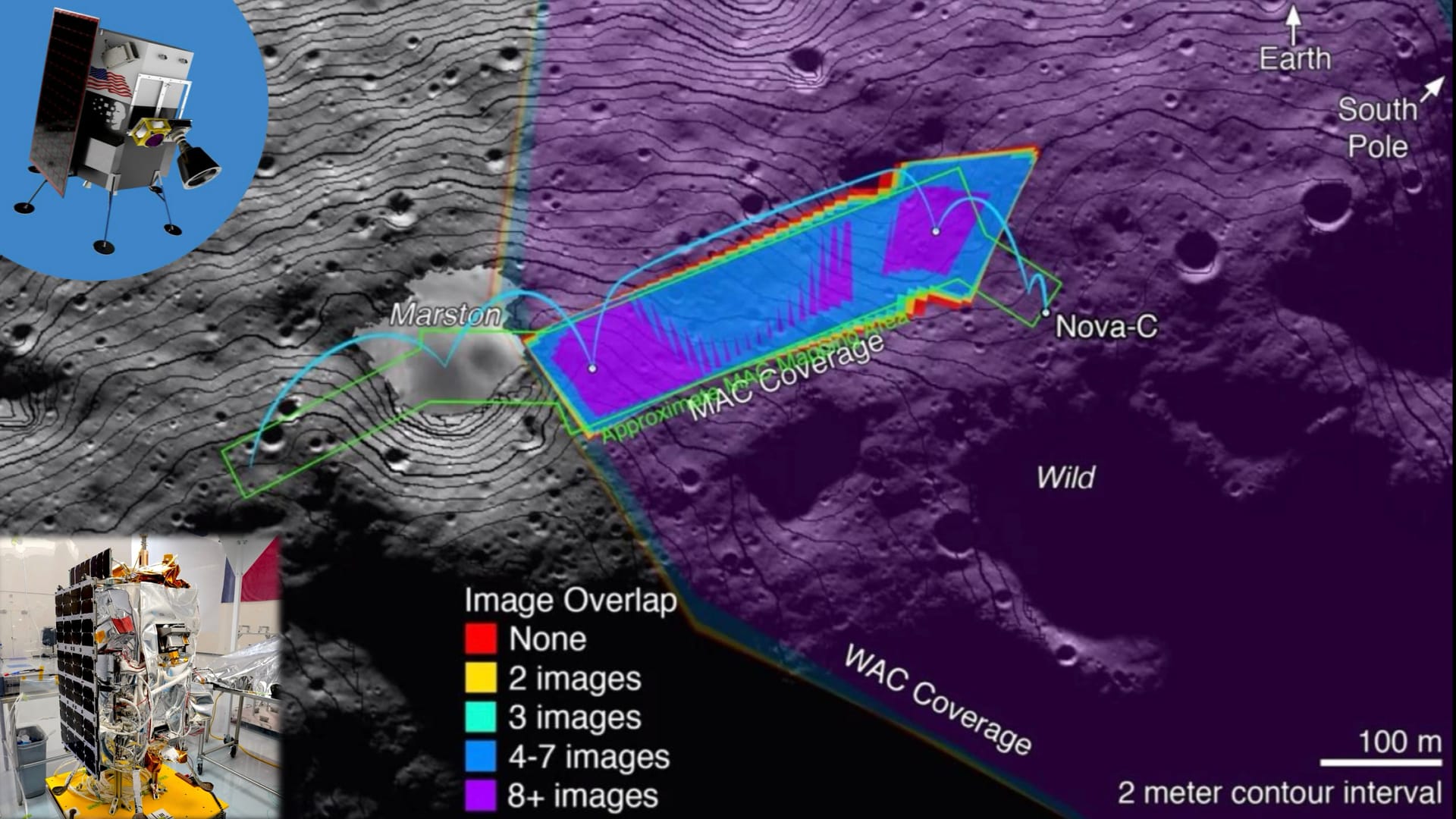
Nova-C will also deploy the Intuitive’s own NASA-supported, $41 million one-meter tall hopper called Micro-Nova. It aims to hop five times to take high-resolution imagery and other measurements of the surface under its flight path. One hop would be over a permanently shadowed region to detect potential water ice in there. Trent Martin from the company said at the European Lunar Symposium in June 2023 that the hopper—which sports two Canadensys high-resolution imagers—was enhanced with multiple instruments over time:
- a neutron spectrometer for detecting subsurface hydrogen as indirect signs of water ice
- a DLR-funded radiometer for measuring surface temperatures
- and a Nokia 4G antenna similar to the one on the MAPP rover
Aside: The NASA-funded Lunar Trailblazer orbiter will launch as a rideshare alongside the IM-2 lander. Trailblazer will provide scientists with unprecedented, high-resolution global maps of the amount, distribution, and state of water across our Moon. It will also help us better understand several other key scientific aspects of Luna.
Many thanks to Open Lunar Foundation, Gordon Roesler and Gurbir Singh for sponsoring this week’s Moon Monday. If you love this curated community resource too, join them and support independent writing and journalism.
NASA CLPS mission to a magnetic swirl also delayed

Intuitive Machines’ third CLPS mission (IM-3) intended to land on the lunar magnetic swirl of Reiner Gamma is also delayed—this one due to “NASA payload delivery dates moving to the right” according to company chief Steve Altemus. IM-3’s launch is now targeted for October or November 2025.
It’s not clear which payloads are causing delays though. It was last year that Lunar Outpost delivered the mission’s MAPP rover to the Johns Hopkins University APL for space environmental testing. The lead of the mission’s Lunar Vertex instrument suite, David Blewett, said at last year’s NASA Exploration Science Forum that all of Vertex’s spectrometers and magnetometers were delivered from their end. Two of these instruments to be aboard the MAPP rover were subsequently integrated with it. Christopher Cokinos later reported that Lunar Vertex successfully passed a NASA acceptance review in December 2023, after which the MAPP rover was delivered to Intuitive Machines in January for integration with the Nova-C lander.
Secondly, as of March this year, NASA JPL had completed building the three shoebox-sized, solar-powered CADRE rovers that Nova-C will deploy during IM-3. The rovers passed all standard pre-launch space environmental tests. Engineers had also tested autonomous driving abilities of the CADRE pack in tandem with each other over at JPL’s Mars Yard with full-scale engineering models. The flight rovers were then ready to be shipped to Intuitive Machines. It’s not clear if they have reached the company’s facilities yet or what is their lander integration status.
The other two IM-3 mission payloads—a retroreflector and a radiation monitor—are from ESA and KARI respectively so they can’t be part of the NASA payload delays being alluded to above.
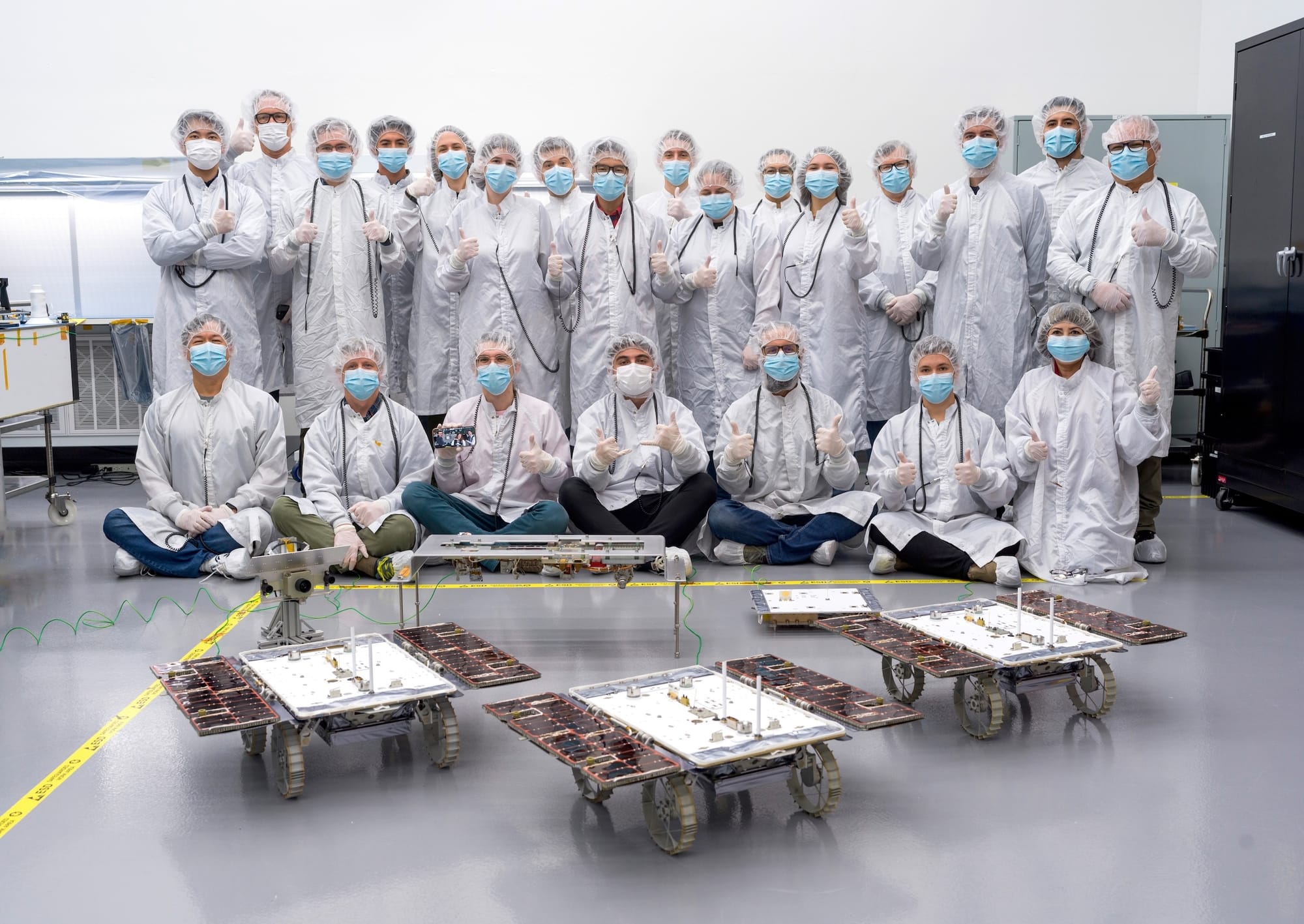
In any case, during the mission the Lunar Vertex suite will study the composition of the Reiner Gamma swirl, and map the strength and direction of magnetic fields on its surface. This will help scientists better understand the effects of solar wind and bombarding micrometeorites on planetary bodies across our Solar System, and also shape our understanding of the Moon’s evolution. As for CADRE, the rovers have multistatic ground penetrating radars to create 3D images of the subsurface structure to a depth of up to 10 meters. The rovers aim to autonomously navigate the swirl region to demonstrate collectively mapping it with better efficiency than a single rover would.
Also see: KPLO provides a new view of Reiner Gamma
More Moon
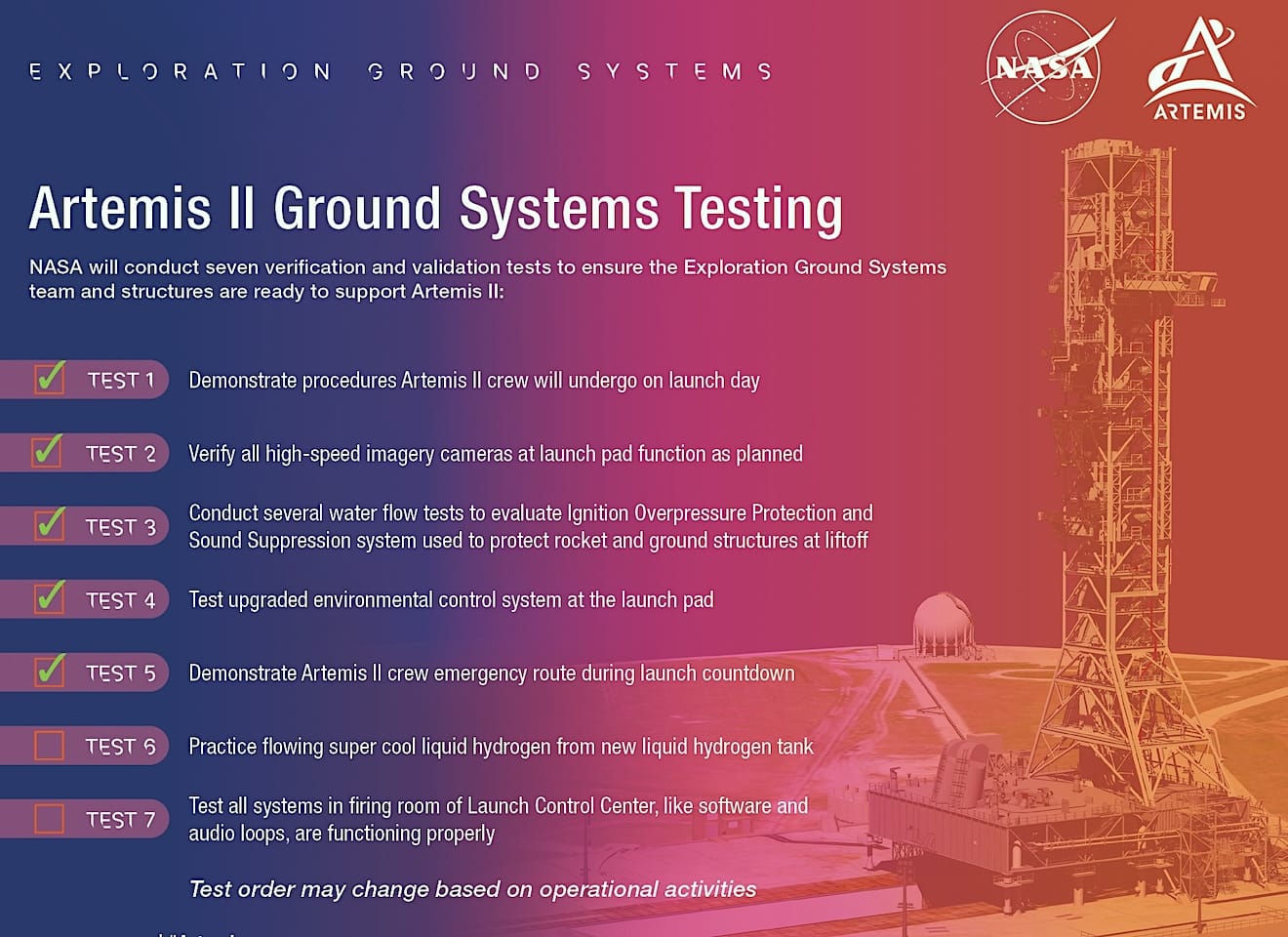
- NASA continues slow progress in preparing ground infrastructure and systems for the mid-decade SLS rocket launch of Artemis II, which will push four astronauts in an Orion capsule around the Moon and back. Following a successful test of the launch-noise-suppressing water deluge system in July and that of the upgraded environmental control system in June, teams now demonstrated a major aspect of the emergency escape system on August 11. More such tests will follow, including one with the mission crew before launch.
- In a paper published in the Chinese Journal of Space Science, researchers propose that China should integrate their in-progress lunar communications relay network of Queqiao satellites with the existing Earthbound Tianlian satellites which notably serve—among other things—China’s Tiangong space station. As Andrew Jones highlighted, the proposal’s driving rationale is to substantially improve surface coverage time and area for China’s upcoming ambitious crewed lunar missions leading to a full-fledged Moonbase, which will simultaneously ensure redundancy if and when China faces ground station availability issues from its Moonbase partners across the globe.
- Rockstar is a NASA small satellite proposal, which will carry a thermal infrared imager to map distributions and abundances of boulders and water ice on the Moon’s south pole with a higher resolution than the upcoming Lunar Trailblazer orbiter and the existing Chandrayaan 2 orbiter so as to aid human-scale traverse planning of future Artemis crewed missions. From an earlier abstract accepted at the 2022 Lunar and Planetary Science Conference:
At 4-m/pixel, the instrument resolution is finer than that of Diviner (200 m/p), Chandrayaan-1 Moon Mineralogy Mapper (100 m/p), Kaguya Multiband Imager (20 m/p), and Lunar Trailblazer (30 m/p).
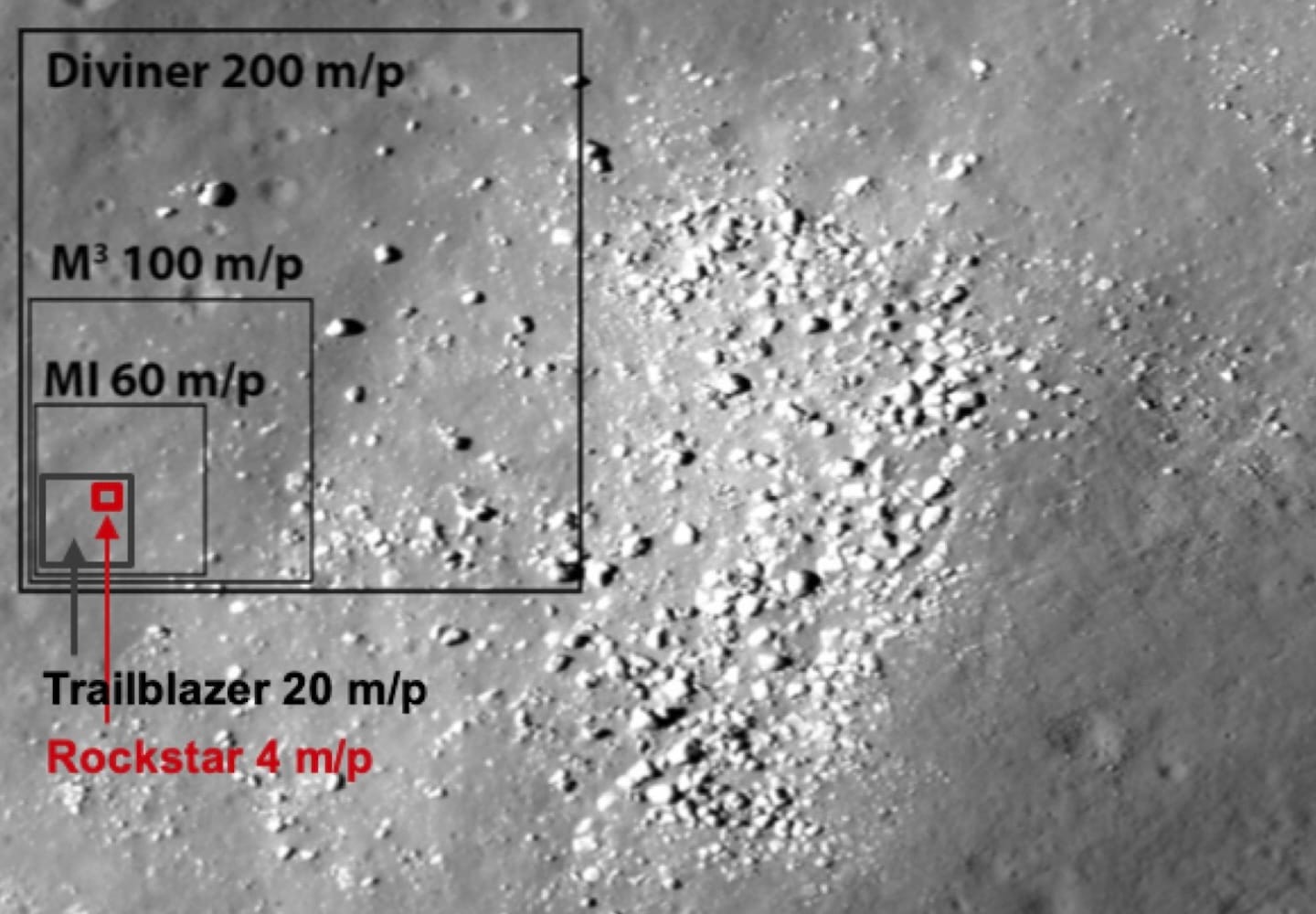
This month I’ve received reader donations for my Moon Monday blog & newsletter from space enthusiasts in 4 countries: the US, Australia, India, and the UK. I love serving a genuinely international audience, and will keep doing it. If you too find value in my writings, see and join all supporters. 🚀🌗
